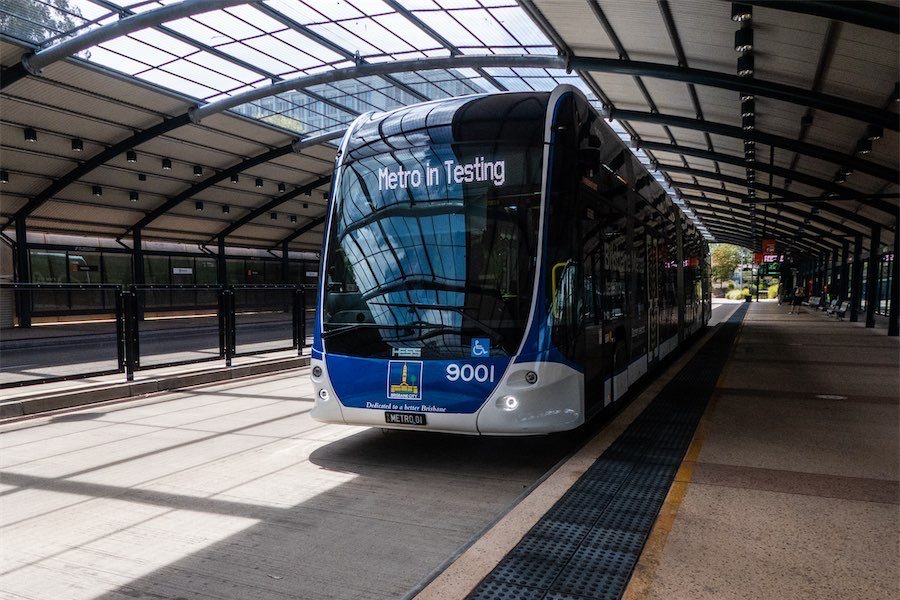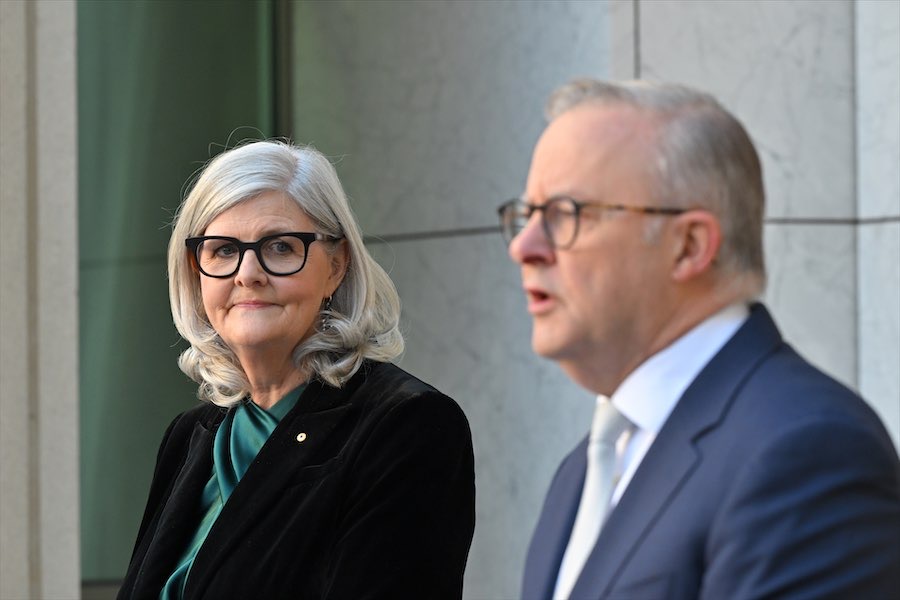
There used to be a memorial to May Hayman and Mona Tait, another Canberra nurse murdered by the Japanese, says
letter writer STEPHEN BROWN, of Forrest.
JON Stanhope puts the case for a memorial to nurse May Hayman and teacher Mavis Parkinson, murdered by the Japanese in PNG during World War II (CN January 13).

In fact, there used to be a memorial to May Hayman and Mona Tait, another Canberra nurse murdered by the Japanese.
It was a substantial plaque in the foyer of the 1940s Canberra Hospital building at Acton. Presumably the memorial did not survive the closure and demolition of the hospital.
May Hayman and Mavis Parkinson are buried at Sangara Mission Station in PNG, next to Lucian Tapiedi. He was a Papuan teacher at the mission. While travelling with a group of missionaries trying to avoid the Japanese, he was killed by a hostile tribesman, and the others by the Japanese.
Tapiedi himself is commemorated by a statue on the West Front of Westminster Abbey, one of a group of 10 statues of Christian martyrs of the 20th century that were unveiled in 1998. The group also includes St Elizabeth of Russia, Martin Luther King, St Maximilian Kolbe and St Oscar Romero.
Stephen Brown, Forrest
Appreciated the article
I GREATLY appreciated the article by Jon Stanhope seeking to honour Canberra nurse and Christian martyr May Hayman, and also teacher Mavis Parkinson, both raped and murdered by Japanese soldiers in World War II.
As well as the memorials in St John’s Church, there was a memorial in the old Canberra Hospital which was blown up with tragic consequences, years ago. What happened to that memorial?
On September 2 each year the martyrs are remembered at mass in the Anglican Lectionary of readings and celebrations.
Fr Robert Willson, via email

It’s a property development ploy
DOES the ACT government think we can’t see that the latest light rail Works Approval Application to the NCA for the raising of London Circuit is another smoke-and-mirrors exercise for the next property development stage?
It is obvious that there is a simple and practical alternative design for this module as shown in the diagram.
This design has the following advantages:
- Disruptions to traffic on Commonwealth Avenue during the construction phase will be minor.
- Long-term reduction in the road network capacity will be limited to light rail demand to cross the northbound lanes of Commonwealth Avenue at the London Circuit ramp.
- The amount of fill required to extend the existing ramp will be less than 10 per cent of that in the Works Application, with attendant environmental benefits.
- The essential features of the Commonwealth Avenue landscape will be retained.
- It will have a much lower cost.
Of course, the right decision is to call a halt to the whole light rail concept.
John L Smith, Farrer
For same cost the government can…
IN 2017-18 Transport Canberra’s buses caused 33,000 tonnes of greenhouse emissions. They provided 14 million journeys, at 2.3 kilograms of emissions per journey. Canberra’s cars provided over 300 million journeys, at about 2 kilograms of emissions per journey.
In 2020-21 Transport Canberra’s buses caused a record high of 37,000 tonnes of greenhouse emissions.
The ACT government plans to commit $1.5 billion to replace fossil-fuelled buses between Woden and Civic with zero-emissions light rail that will make the trip in between 25 and 30 minutes.
“Construction of light rail will be very disruptive for our road network, with lane closures and diversions in place for several years,” according to Transport Minister Chris Steel.
For the same cost, the government can do all of the following:
- Without disrupting the road network, replace every fossil-fuelled Transport Canberra bus with a zero-emissions electric bus, that can travel between Woden and Civic in less than 20 minutes.
- Provide more transit lanes, to further reduce emissions and commuting times.
- Provide every Canberra household with $6000 to spend on zero-emissions electric cars, public transport tickets, zero-emissions electric or non-electric bicycles, and equipment to allow bicycles to carry groceries, to travel at night, and to travel on wet roads.
Leon Arundell, Downer
‘Mad’ to destroy traffic interchanges
I FIND it impossible to comprehend what motivation or thinking is behind this continuing obsession with the tram and the mad idea to completely destroy the traffic interchanges on City Hill and fill in London Circuit with thousands of cubic metres of fill.
I despair at the lack of vision of our government and just hope that, for once, the NCA does take notice of the vast majority of Canberrans who have made submissions opposing this latest folly.
The well thought out and designed interchanges on Commonwealth Avenue on both sides of the lake, built in the early 1960s, have worked splendidly, without traffic lights, please don’t destroy them.
Colin Smeal, via citynews.com.au
Get rid of the traffic cloverleafs
WHAT great cities of the world are remembered for their well-functioning cloverleafs, or six-lane freeways through the heart of the city centre? What usefulness does the city get from the vast tracts of land contained within and around those high-speed vehicle corridors?
In the 1960s we decided to prioritise the unimpeded, high-speed movement of cars over any other consideration, such as what it’s like to walk in an environment like that. It was a mistake, and getting rid of the cloverleafs is a step in the right direction for returning the city to what it is – a place where people live, work and play.
Robert Knight, via email
Active citizens get organised
SO, what actions might the ACT government take this year that “allow residents and their community councils to get their matters discussed and… actions taken”? (Paul Costigan, CN January 13).
Put another way, how can we, the people, get our MLAs working more effectively for us?
Waiting for the MLAs and the system to change won’t deliver. It comes down to us to be active citizens and organise ourselves both through a revised version of Community Councils and in other ways.
The Greens took a neighbourhood democracy program to the last election and “Pilot and then scale-up a Neighbourhood Democracy Program across Canberra suburbs” is in the Parliamentary and Governing Agreement. While limited to being a participatory budgeting exercise, it is one other way of engaging the community and could be expanded. I believe that this program sits with the Chief Minister.
Active Democracy Australia (there is a Bean branch) offers ideas for electorate action groups which could be adapted to ACT electorates. One key theme is building direct personal accountability of MLAs to their community. That way MLAs get to hear what people are concerned about and have a mechanism to also work with the community on solutions.
A further idea could be for electorate-based or ACT-wide citizens assemblies to be held, facilitated well, on specific thorny topics such as our planning system, to arrive at a coordinated community position that the government can work with the community to implement. Such assemblies have been successfully held in many places, particularly in Europe.
This is only a few of many ideas about how we can improve the function of government in the ACT. If enough people are interested we could get together and talk about how to make it work for us.
Peter Tait, convener, Canberra Alliance for Participatory Democracy
Why don’t we front these ‘excusers’?
I WELCOME, as usual, Paul Costigan’s crusade for Canberra in the face of our Labor/Greens government and their developer mates.
However, his “Oh, they’re all too busy for community issues” (CN January 13) column sadly applied as much to most of our citizens as our “new normal” MLAs and their public-sector officers.
Community meetings, even pre-covid, were not well attended and the few people who did so listened politely and questioned respectfully as spin, vague promises and empty commitments flourished.
Why don’t we angrily front these “excusers”, challenging them and their dissembling? Those who misleadingly address us should fear such meetings – if there are any more now Zoom allows our “leaders” to hide behind single-question screens.
Greg Cornwell, Yarralumla
Distinguishing truth and lies
WHEN it comes to truth, it ain’t necessarily so when it comes from the pen of Robert Macklin (“The Gadfly” column, CN January 6).
Robert was describing himself, more so than our PM, when he said that he could not distinguish between the truth and lies.
Rosemary Lyne, Kingston
Who can be trusted?
In a world of spin and confusion, there’s never been a more important time to support independent journalism in Canberra.
If you trust our work online and want to enforce the power of independent voices, I invite you to make a small contribution.
Every dollar of support is invested back into our journalism to help keep citynews.com.au strong and free.
Thank you,
Ian Meikle, editor





Leave a Reply